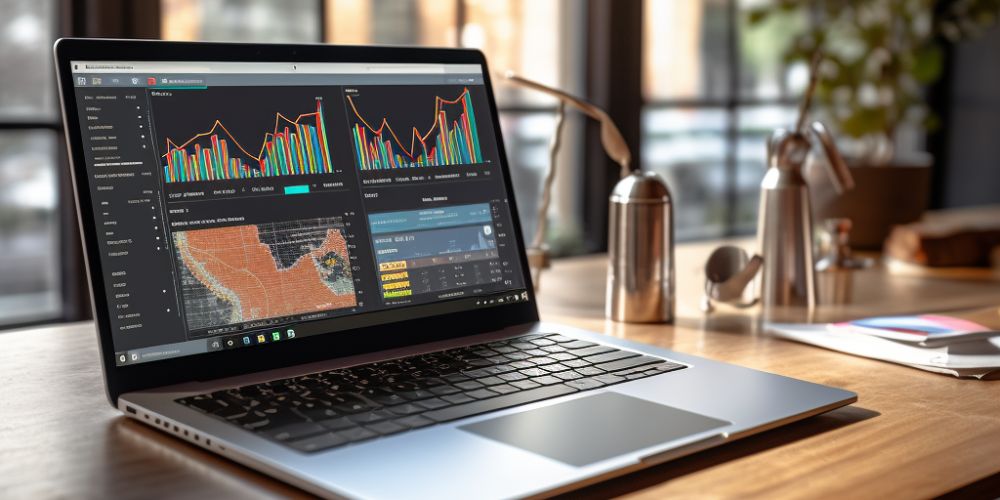Macro trading is a strategy that involves making investment decisions based on macroeconomic factors and global trends.
In this article, we will explore the basics of macro trading, different strategies used, key players in the field, and the pros and cons of this approach.
Additionally, we will provide some best practices for macro trading success. So, let’s dive in!
The Basics of Macro Trading
Macro trading is a strategy that involves making investment decisions based on macroeconomic factors and global trends.
These factors include economic growth, inflation/deflation, interest rates, and government policies. Traders who engage in macro trading analyze these trends and patterns to identify investment opportunities.
One of the key concepts in understanding macro trading is the impact of global events on markets.
Economic and political developments across the world can significantly influence asset prices and market sentiment. Macro traders stay informed about global news and events to capture potential investment opportunities.

Economic Indicators
Macro traders closely monitor economic indicators such as GDP growth, inflation rates, employment data, and consumer spending.
These indicators provide insights into the overall health of an economy and can guide investment decisions.
Geopolitical Considerations
Traders also analyze geopolitical factors, such as trade tensions, regional conflicts, and policy changes, that can impact the global economy and financial markets.
Understanding the interplay between politics and economics is essential for successful macro trading.
Market Sentiment
Macro traders pay attention to market sentiment, which refers to the overall mood and outlook of investors.
Sentiment can be impacted by news events, investor preferences, and economic expectations. By gauging market sentiment, traders can identify trends and potential turning points.
Strategies Used in Macro Trading
Macro traders use various strategies to exploit market inefficiencies and profit from macroeconomic trends. Here are four popular approaches:
Top-Down Approach
This strategy involves analyzing the broader economic conditions and then selecting specific securities or asset classes based on those conditions.
Traders start with a macro view and then narrow down to individual investment opportunities.
Bottom-Up Approach
In contrast to the top-down approach, this strategy focuses on selecting individual securities without relying heavily on macroeconomic forecasts.
Traders analyze company-specific factors, such as financial performance and competitive advantages, to make investment decisions.
Cyclical Approach
This strategy involves identifying and capitalizing on economic cycles. Traders anticipate periods of expansion and contraction and adjust their portfolios accordingly. They invest in assets that perform well during the expansion phase and protect their capital during downturns.
Opportunistic Approach
This strategy is more flexible and adaptive. Traders are constantly scanning the market for opportunities created by unexpected events, policy changes, or sudden shifts in market sentiment.
They are quick to enter or exit positions based on these opportunities.

Key Players in Macro Trading
Several market participants engage in macro trading. These include:
Hedge Funds
Hedge funds are known for their active management strategies and the ability to generate significant returns by exploiting macroeconomic trends.
Hedge funds often have dedicated macro traders or teams that focus solely on macro trading strategies.
Investment Banks
Investment banks have dedicated trading desks that engage in macro trading for their own accounts and on behalf of their clients. These banks employ traders who specialize in macroeconomic analysis and trading strategies.
Asset Managers
Large asset management firms employ macro traders to manage their portfolios and generate returns for their clients. These traders monitor macroeconomic trends and make investment decisions based on their analysis.
Central Banks
Central banks play a significant role in macro trading through their monetary policy decisions and interventions in financial markets. They use macroeconomic indicators and policy tools to manage interest rates, money supply, and exchange rates, which can impact macro traders’ positions.
Advantages of Macro Trading
Macro trading offers several advantages, including the potential for high profits. By analyzing macroeconomic trends, traders can identify lucrative investment opportunities that align with prevailing global conditions.
Additionally, macro trading can provide diversification benefits, as it operates across different asset classes and geographies.
Potential for High Returns
Successful macro traders have the potential to generate substantial returns by capitalizing on major macroeconomic trends and market inefficiencies.
Macroeconomic shifts can create significant price movements across various asset classes, providing ample opportunities for profitable trades.
Diversification Benefits
Macro trading allows traders to diversify their portfolios across different regions, asset classes, and investment strategies.
This diversification helps reduce the risk associated with a single investment, and can enhance overall portfolio returns.

Disadvantages of Macro Trading
However, macro trading also has its disadvantages. Success in macro trading requires significant knowledge and expertise in economics, finance, and geopolitical factors.
The complexity of factors influencing macroeconomic trends makes it challenging to predict market movements accurately.
Macro traders must also be prepared for unexpected events that may impact their positions.
Increased Complexity
Macro trading involves understanding the intricate interplay of multiple macroeconomic factors and their impacts on various markets.
This complexity requires a deep understanding of global events, economic theories, and financial markets, making it more challenging for traders compared to simpler investment strategies.
Inherent Uncertainty
Despite thorough analysis, macro traders must accept that predicting the future accurately is impossible.
Unexpected events, policy changes, and other variables can create volatility and uncertainty, affecting the outcome of trades.
Risk management is crucial to mitigate potential losses.
Best Practices in Macro Trading
To excel in macro trading, traders can follow these best practices:
Conduct Thorough Research
Stay well-informed about economic indicators, central bank policies, and geopolitical developments. Read financial news, economic reports, and analysis from reputable sources.
Always analyze multiple sources to get a comprehensive view of the macroeconomic landscape.
Develop a Clear Trading Plan
Define your investment framework, risk tolerance, and target returns. A well-defined plan will help you stay disciplined and make informed decisions.
Consider incorporating different macro trading strategies that align with your goals and risk appetite.
Use Risk Management Strategies
Implement risk management techniques to protect your capital. Diversification across asset classes, position sizing, stop-loss orders, and hedging strategies are essential tools in managing risk.
Risk management should be an integral part of your trading plan and actively monitored.
Stay Up-to-Date on Global Economic Trends
Read financial news and reports regularly to stay abreast of global economic trends. Stay informed about central bank decisions, geopolitical developments, corporate earnings, and relevant economic data.
This will help you identify potential opportunities and risks in real-time.
Continuously Learn and Adapt
Macro trading requires continuous learning and adaptation to evolving market conditions. Stay updated on new economic theories, trading techniques, and market trends.
Attend conferences, webinars, and seminars. Engage with other traders and professionals in the field to exchange ideas and insights.
In summary, successful macro trading requires a combination of knowledge, experience, discipline, and adaptability.
By understanding the basics of macro trading, employing effective strategies, and following best practices, traders can increase their chances of success in this exciting field.

Frequently Asked Questions
What skills do I need to become a successful macro trader?
To be successful in macro trading, you need a solid understanding of economics, financial markets, and geopolitical trends.
Analytical skills, critical thinking, and the ability to manage risk are also essential.
Is macro trading suitable for beginner traders?
Macro trading can be complex and challenging, so it is often more suitable for experienced traders.
Beginner traders may find it beneficial to acquire a strong foundation of knowledge and experience before venturing into macro trading.
What types of assets are commonly traded in macro trading?
Macro traders often trade currencies, government bonds, equities, commodities, and derivatives.
They may also use exchange-traded funds (ETFs) and other instruments to gain exposure to different asset classes.
Conclusion
Macro trading offers unique opportunities for traders to profit from global economic trends.
By understanding macroeconomic factors, employing effective strategies, and staying informed, traders can navigate the complex world of macro trading.
However, it is essential to acknowledge the challenges and risks involved and implement sound risk management practices.
By following best practices and continually learning, traders can increase their chances of success in this exciting field.
Pro Tip: As the global economy is ever-evolving, it is crucial for macro traders to constantly update their knowledge and adapt to changing market conditions. Embrace a continuous learning mindset to stay ahead of the curve.
Remember, successful macro trading requires a combination of knowledge, experience, discipline, and adaptability. May your macro trading journey be profitable and rewarding!


 Tags:
Tags:










